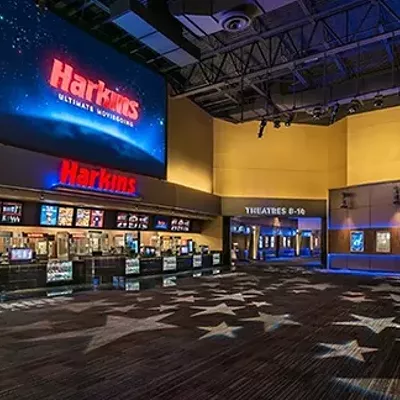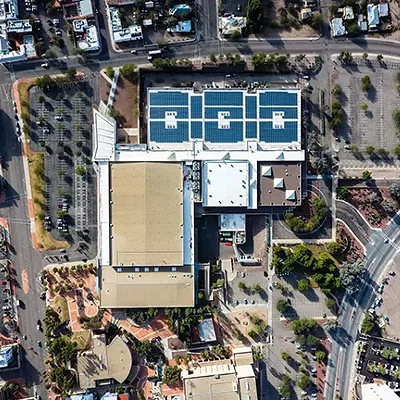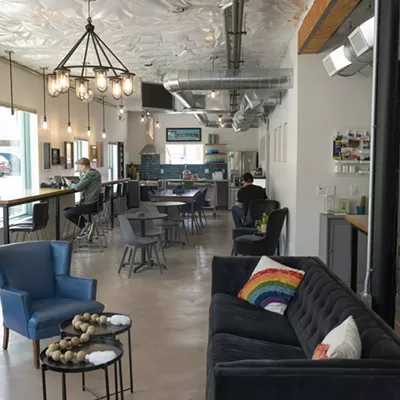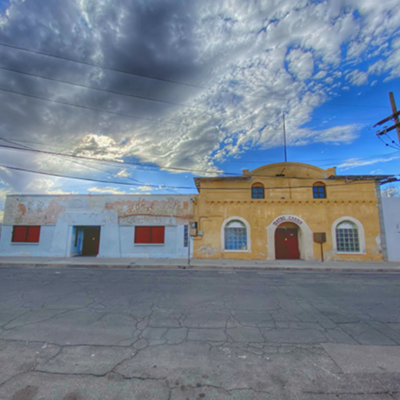The obliteration of those historic features 70 years later, along with the proposed construction of an adjacent mixed-use development, is now at the center of a land-use controversy.
Local historian Ken Scoville believes City Hall is once again destroying a part of the community's heritage in pursuit of a phantom dream.
"We don't build on our assets," Scoville says. "Instead, Tucson builds on speculation. The intersection of Drachman and Oracle is a perfect example of what's wrong with Tucson. This was a gateway into the community, so the city destroyed it."
The wide route now known as Oracle Road north of Drachman Street was once called The Miracle Mile. According to a 1937 Arizona Highways magazine article, this stretch of roadway marked "the most advanced step in the state highway system since 1912 when the present highway program was started."
That legacy came under attack six years ago with proposals to alter the gently curving three-way intersection, through which about 28,000 cars pass daily. The idea was to straighten it into a T-alignment, with the goal of relieving congestion at the nearby intersection of Stone Avenue and Speedway Boulevard, by making Oracle more of a downtown entryway.
In 2005, Skylight Productions--a limited-liability corporation--announced it wanted to develop the northeast corner of the realigned intersection. In addition to a portion of the roadway, this land now contains standard-looking auto-related buildings--some occupied, some not--but the company wanted to change that.
According to a letter from LLC member Charles Pique, the group intended to build "a multi-use complex which may contain a combination of retail stores, offices, restaurants and residential space." Pique also noted the project "may include six-story structures, multi-level parking and a park-like interior courtyard."
But the letter also clearly stated: "The plan for the complex is subject to obtaining approximately $30,000,000.00 in funding."
The alteration of the Drachman and Oracle intersection would assist this proposal by freeing up one acre of land, which could be added to the acre and a half of commercial property already owned by Skylight Productions.
Believing the six-story proposed project could "create an active pedestrian node at this busy and highly visible intersection," Assistant City Manager Karen Masbruch made two suggestions about the proposal to the City Council last year.
The first was that the property be considered for a Planned Area Development (PAD) zoning classification--a category which usually requires 40 acres. At the same time--and also on the council's "consent agenda," for items considered routine and uncontroversial--Masbruch recommended the acre of land be sold to Skylight Productions for $235,350.
The council approved both items--and Scoville thinks they got hoodwinked. He points out the sales agreement contains no reference to a mixed-use project, but instead refers to a single story, 20,000-square-foot retail building surrounded by parking.
Skylight Productions project manager Catherine Rex explains: "In order to do the land purchase, we had to have a legal plan under the current (commercial) zoning rules. But that's not what we want to build there."
Councilwoman Karin Uhlich represents the area and says it was only the six-story proposal which was discussed with her. She calls the lack of any reference to that project in the sales agreement "a staff error."
"The staff now says the actual development plan for the property wasn't completed," Uhlich says, "but a letter from Rex (about the six-story proposal) could have been referenced."
Scoville also points out that Masbruch's communication to the City Council states: "The applicant has agreed to pursue and receive such (PAD) zoning by Dec. 31, 2007." But, he emphasizes, there is no such provision in the approved agreement.
Masbruch says the deadline requirement was in an early draft of the agreement, but got dropped for unknown reasons.
While Rex hopes to meet the deadline, that prospect appears unlikely, since Skylight Productions is just getting ready to hire a consultant to prepare the PAD application. According to members of the city's Urban Planning and Design Department, once a plan is submitted, the usual time for review and council approval is up to one year.
Because they are under no legal obligation to meet the deadline, the developers don't have to worry. In the meantime, the intersection is now being reconfigured into a T-alignment by the city at a cost of $2.2 million, and should be completed by Nov. 14.
Having seen City Hall stung by numerous developers promising to build mixed-use condominium projects downtown and then failing to deliver, Scoville thinks that history is repeating. Instead of the proposed six-story building, he believes something like a chain drug store will end up at the intersection.
Calling the whole episode "really smelly," Scoville says: "I believe this was all done purposefully."
Rex strongly disagrees: "So many people are getting down on us about that intersection. We want to perform."
Acknowledging that because of the soft condominium market, Skylight Productions may have to look at rental units instead, she insists: "We're trying to do what is right."
For her part, Uhlich concludes: "I suppose the key thing is that the land sale and PAD will be a better outcome for the property than the current commercial zoning. That outcome's not guaranteed, but we've promoted and encouraged it."









